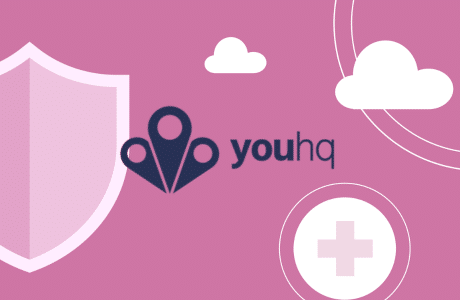Although suicide is the leading cause of death for young people in the UK, it is important to understand suicide is preventable. Too often young people suffer in silence when experiencing suicidal thoughts for fear of judgment and misunderstanding. By lowering the stigma and being proactive in noticing when students are struggling, schools are in a unique position to save lives.
Suicide prevention is a collective responsibility, with educational settings playing a key role in safeguarding the wellbeing of children. This blog will discuss how safeguarding platforms can assist educational staff in embedding the core components of this strategy into their practices, ensuring no child has to endure their struggles alone.
The Suicide Prevention Strategy
The 2023 Suicide Prevention Strategy for England, focusing on private sector, public organisations and schools, outlines the government’s goal of lowering suicide rates, improving support for individuals who have self-harmed and helping the bereaved. The strategy emphasises the importance of prevention and early intervention in reducing suicide-related fatalities.
This strategy comes at a crucial time. Data from the Royal College of Paediatrics and Child Health indicate an increase in suicide rates among males aged 10-14 since 2013, as well as in females across all ages. Children and young people are identified as a priority area for the comprehensive suicide prevention strategy.
Efforts for impacting suicide rates in this age group include:
- Expanding mental health supports in schools
- Training
- Financially supporting anti-bullying organisations and their support of schools
- Identify ways to include suicide and self-harm prevention as part of the relationships, sex and health education (RSHE) guidance on curriculum
Support in Schools
The Department of Education emphasises that having support in schools and colleges is vital to preventing suicide amongst students, including the promotion of overall health and wellbeing. The strategy highlights addressing risk factors as central to suicide prevention, including physical illness, financial difficulty, domestic abuse, loneliness and other mental health issues.
Enforcing holistic safeguarding practices that address all risk factors and challenges noted in government guidance like the Suicide Prevention Strategy is crucial. It ensures that issues do not escalate, and children can receive the mental health support they need.
Many education settings are already providing crucial methods of support, such as initiating discussions about emotions and wellbeing in lessons, training staff not to reinforce negative stereotypes and supporting young people to open up about their suicidal thoughts.
Understanding Risk Factors
The Suicide Prevention Strategy notes that addressing risk factors is central to suicide prevention. It lists priority risk factors, including:
- Physical illness
- Financial difficulty
- Domestic abuse
- Loneliness
- Other mental health issues (e.g. substance misuse)
It’s important that every education setting is equipped to recognise and address the unique challenges that its pupils may face. Teachers and safeguarding leads in schools need to be able to recognise the risks posed to children in their care, such as cyber bullying, domestic abuse or other forms of harm.
Individuals facing wellbeing challenges require an intentional safeguarding approach that considers the entirety of their circumstances and experiences. Staff members should therefore pay close attention to the uniqueness of each student’s situation, enabling the most effective approach each time. Ensuring that staff in school settings are prepared to address the unique challenges faced by their students is crucial. This involves emphasizing mental health and wellbeing support, alongside tracking any issues to ensure students receive the necessary support and that problems are resolved quickly.
Charting the Route Forward
Schools should look to incorporate guidance from the Suicide Prevention Strategy into daily safeguarding practices. Merging digital platforms into safeguarding practices can help schools to spot any patterns and address any concerns or risk factors highlighted in the Suicide Prevention Strategy. It can help to make early intervention possible and ensure that staff are equipped to provide the necessary support to keep children safe.
Digital safeguarding platforms, like CPOMS StudentSafe, can be a valuable tool for helping staff to incorporate the strategy effectively. The software supports the main threads of the Suicide Prevention Strategy action plan and improve safeguarding efforts by:
- Providing a centralised, digital platform for logging and categorising concerns, creating a comprehensive chronology for each child. This enhances data and evidence collection, allowing schools and other settings to move away from paper-based systems and helps staff to better track and analyse trends, catching any concerns early and preventing the risk of suicide.
- Highlighting patterns of behaviour, helping staff to build a full picture of every child’s circumstance and enabling their support to be truly effective.
- Being able to escalate any incident directly into a case for greater clarity and more effective case management. Also the ability to link previous and future incidents to a case and collaborate more efficiently with staff and other agencies.
Adding to this, CPOMS Engage provides a platform to support information sharing between schools and local authorities. Safeguarding, child protection, pastoral and welfare information can be shared swiftly and securely across settings via an automated CPOMS Share Contract, facilitating fast and effective crisis support for vulnerable children.
Suicide prevention is everyone’s business
Everyone has a role to play in safeguarding children, which includes supporting students experiencing suicidal ideation. Having supports in place means creating opportunities for early intervention, as well as having an appropriate response to those experiencing suicidal thoughts or those who are more at risk.
Timely and effective crisis support is essential, and schools must have robust safeguarding practices in place. Using up-to-date and effective software can play a key role in empowering staff to support their student’s mental health and wellbeing, from the very first signs of concern to enabling early interventions.
For more information about how CPOMS software can help your setting with suicide prevention, book a demo today.




